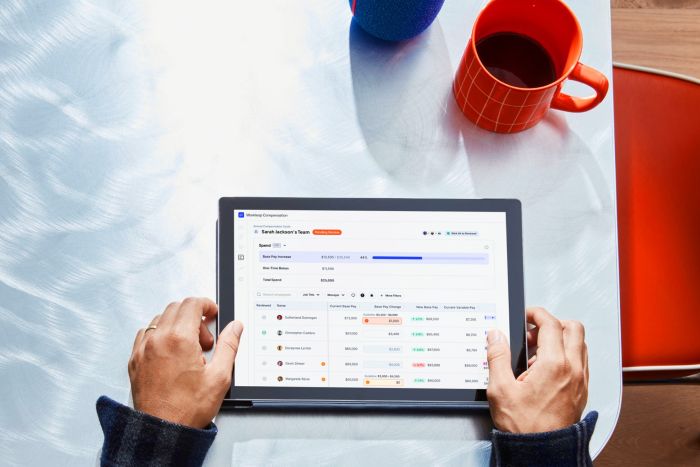AI Talent Management Software for Small Business: Scaling People Strategy with Ease
Small and medium-sized businesses grow in different ways, but they all reach a moment when people operations become harder to manage than the business itself. Whether you are a two-year-old company with fifty employees or a fifteen-year-old organization with more than three hundred, growth eventually outpaces the systems that support it. Managers begin to feel stretched. Processes that once worked start to falter. HR is asked to handle more than the team—and even the AI talent supporting them— can reasonably absorb with the resources they have. In these moments, small and mid-sized businesses want something simple.
They need to understand how their teams are doing, how performance is trending and where attention is required so people can succeed. Yet gathering and interpreting that information takes time, and time is the one thing growing companies rarely have. What SMBs need is clarity without additional workload.
This is where AI talent management software becomes valuable. It gives small businesses access to the kind of insight and structure once reserved for much larger organizations, while keeping the tools lightweight and the workflows manageable.
For a company trying to scale with confidence, that combination can make all the difference.
Key Takeaways
- Small and medium-sized businesses face challenges in people operations as they grow, requiring clarity and structure.
- AI talent management software simplifies HR processes, automates routine steps, and creates consistency across teams.
- Core modules needed for SMBs include engagement, performance, and compensation for a better employee experience.
- The right AI talent management software integrates easily with existing systems and allows for incremental implementation.
- Success metrics such as participation rates and retention indicate if people practices effectively support business growth.
Table of contents
- AI Talent Management Software for Small Business: Scaling People Strategy with Ease
- What Small Business HR Struggles with When Scaling
- Why AI Powered Talent Management Software Works for Smbs
- Core Modules Smbs Need: Engagement, Performance, Compensation
- Implementation Considerations for Small Business HR Teams
- Success Metrics for Smes Using Talent Management Software
What Small Business HR Struggles with When Scaling
As small businesses grow, the challenges inside their people operations often shift from volume to variability. The issue is not only the number of employees, it’s the number of different ways work gets done. Managers rely on different habits, teams communicate differently, and expectations can drift when there is no shared structure holding them together.
This inconsistency shows up in small but meaningful ways. After all, some managers run thoughtful check-ins, but others postpone them for weeks. Some teams receive regular recognition, and others go long stretches without feedback.
By the time a company grows to include multiple teams and different layers of management, the need becomes clear. SMBs don’t need more tools, they need a foundation that scales with them as they grow, one that brings consistency, visibility and shared expectations back into their people practices.
Why AI Powered Talent Management Software Works for Smbs
AI helps small businesses scale people operations. Instead of relying on managers to track processes in different places, AI automates routine steps, interprets feedback and insights that matter. It gives HR and leaders greater clarity, creates consistency by guiding managers through simple, repeatable workflows, and provides the structure needed to maintain performance and alignment.
This is the same philosophy behind Workleap. Their tools keep processes light and intuitive while still offering the depth that scaling teams eventually need. It’s people management designed to grow with the business, not weigh it down.

Core Modules Smbs Need: Engagement, Performance, Compensation
Small businesses do not need enterprise tools with dozens of modules. They need the three that shape the employee experience the most.
Engagement
Pulse surveys and feedback loops help leaders understand how people feel across the organization. As companies grow, it can help managers stay ahead of issues before they spread. The simplicity of the feedback process is what keeps employees participating and leaders informed.
Performance
Structured reviews, guided check-ins and goal tracking give managers the support they need to evaluate people consistently. As teams expand, it creates alignment by giving every manager the same framework for coaching, development and expectations.
Compensation
Many small businesses start with straightforward salary adjustments. As organizations grow, they often introduce merit cycles, leveling and variable pay. AI helps connect these decisions to performance and engagement trends, reducing guesswork and improving fairness. It helps leaders make decisions that feel consistent, transparent and rooted in real data.
Implementation Considerations for Small Business HR Teams
Small businesses are often concerned about implementing new systems without overwhelming their teams. The right AI talent management software should remove that concern rather than add to it.
A good platform will sync easily with existing HRIS tools, require minimal training for managers and allow for an incremental rollout. Smaller companies can start with engagement or performance first, whereas larger SMBs might adopt multiple modules at once. The goal is not to overhaul everything. it’s to provide a structure that grows with the organization.
This is one of the reasons platforms like Workleap resonate so strongly with companies across the SMB landscape. The tools are built to be approachable, with features that guide managers through each step, reducing the risk of inconsistent adoption or process fatigue.
Success Metrics for Smes Using Talent Management Software
When talent management becomes structured and connected, SMBs can finally see whether their people practices are scaling with the business. The right metrics reveal not just performance, but whether the organization has built the clarity and stability needed for growth.
Participation rates show how willing employees are to engage with reviews and feedback. Manager satisfaction indicates whether the tools reduce effort and support better coaching. Retention among key roles reveals whether people feel recognized and aligned with the company’s direction. Together, these signals show whether the business is building a people strategy that can grow without strain.
For SMBs, these metrics do more than measure progress. They show what becomes possible when people processes run on a unified system instead of manual effort. When insights are easy to trust and processes are easy to follow, employees feel more aligned, managers feel better equipped and the business gains the confidence it needs to scale its people strategy with ease.










